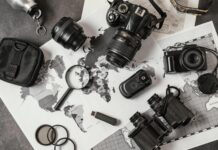1Picture of the Week by

David | Website
My bio – I am a based in Manchester and I shoot mainly people. I like candid street photography and also street portraits if I see someone who looks great. I also like documentary style photography – recording things for posterity.
About the images – I was in Colombo, Sri Lanka and I wanted to photograph the busy streetlife and the interactions that people still have in places like this and India where life is lived on the street. Also, I shot in color for the first time as the color in this part of the world really can’t be ignored.
What fascinates about street photography – it’s a little bit like fishing. You never know what you’re going get. Sometimes you go home with nothing and sometimes you get great images. There’s also something very therapeutic about just wondering with the camera with your eyes open and looking for certain events to unfold and then following that to its conclusion.
3 photographers – I was asked to exhibit some images at an exhibition in Paris called Streets sans Frontieres. While I was there I saw the work on Maria Grazia Beruffi – her website is mariagraziaberuffi.com.
Also, there’s a guy called Valerio Bispuri that I like valeriobispuri.com
And finally, this one is quite well known. Max Vadukul is a fashion photographer but he shoots in a very reportage or street kind of way www.maxvadukul.com
2Joel Meyerowitz’s Career Is a Minihistory of Photography

Now wait a second, is this magic? Or has it all been carefully arranged with actors, lighting and special effects? The truth is more surprising: It’s neither. It’s simply a picture snapped by Joel Meyerowitz on a New York City street one day in 1975. No faces are immediately evident, just figures in camel-colored coats turned away from us, a puff of smoke with two people suspended in it. No, four people, if you count those shadows, six if you count the backs on which the shadows fall. In fact there are seven people, if we count the additional shadow in the foreground, the photographer’s — and further figures emerge as the eye adjusts to the deep background. It is a picture that just won’t sit still.
Meyerowitz began to work as a street photographer in the early 1960s and quickly became a virtuoso of the craft. He was inspired by the example of Robert Frank, whose work was full of poetic melancholy, though what first struck Meyerowitz was the balletic grace with which Frank moved while photographing. Later, he went out roaming with Garry Winogrand, who was frenetic and indefatigable. A great street photographer needs two distinct talents: the patience to lie in wait for unanticipated moments and the skill to catch them with the click of a shutter. Meyerowitz had both, whether he was shooting in black and white or in color. The color work is what he’s better known for, photographs that, to begin with, were brash and often jubilant, a world away from Frank’s gloom.
3SHIN NOGUCHI JOINS IN-PUBLIC

“We are absolutely delighted to announce that Shin Noguchi has joined In-Public.
We have long admired Shin’s sharp eye for oddities on the street and his graphic use of color. And we are especially pleased to add a Japanese perspective to our collective.” I just joined IN-PUBLIC collective, the top of street photography collective in the world.
4The Artist Seeking out the Cinematic in Everyday Life

Everyday life is filled with fleeting moments of grandeur when the mundane suddenly becomes majestic and you feel the overwhelming glory of being alive. American photographer and filmmaker Alex Prager understands this perfectly. “I can see drama in everything, the comedy, and the tragedy, even where there is none,” Prager reveals. “My interest is with the emotional and psychological components in a frame. The technical, the narrative, and the process – all of that is secondary to the mood. This is what makes art timeless for me.”
The Los-Angeles based artist got her start after seeing a William Eggleston exhibition at the turn of the millennium. “When I first discovered photography I looked at the great street photographers and tried to make pictures like them,” Prager explains. “I’m still obsessed with street photography and it finds its way into everything I make.”
5Into the Light

In Nice, where I live, it rarely rains. The sun is powerful and pervasive. It is a city in the south of France that is still very much an old town—it has kept its charm and authenticity over the years. It’s also the location where I often shoot, and therefore, a crucial part of all my photographs.
For me, light is an important factor—even the subject—of my work. I try to frame moments where the light connects the figures and graphic elements in the scenes I capture.
Sometimes I make a point to photograph near bodies in motion because I like this proximity—I like to feel embedded in the photo, to hear fragments of a discussion, to smell the perfume of the people around me. That way, even though I am not in the photo, I feel part of the picture.
6A Father, a Son, a Disease, and a Camera

Cheney Orr was 21 when his father received a diagnosis of early-onset Alzheimer’s disease in 2011. His father, David, was just 62, and the son felt he had never quite known him as an adult. The camera offered a way to bridge that gap. It was an excuse to visit regularly and a portal through which to understand the disease.
“There was also a level of guilt just to spend more time with him and get him out of his isolating hole of an apartment,” the younger Mr. Orr, who is now 27, said.





















